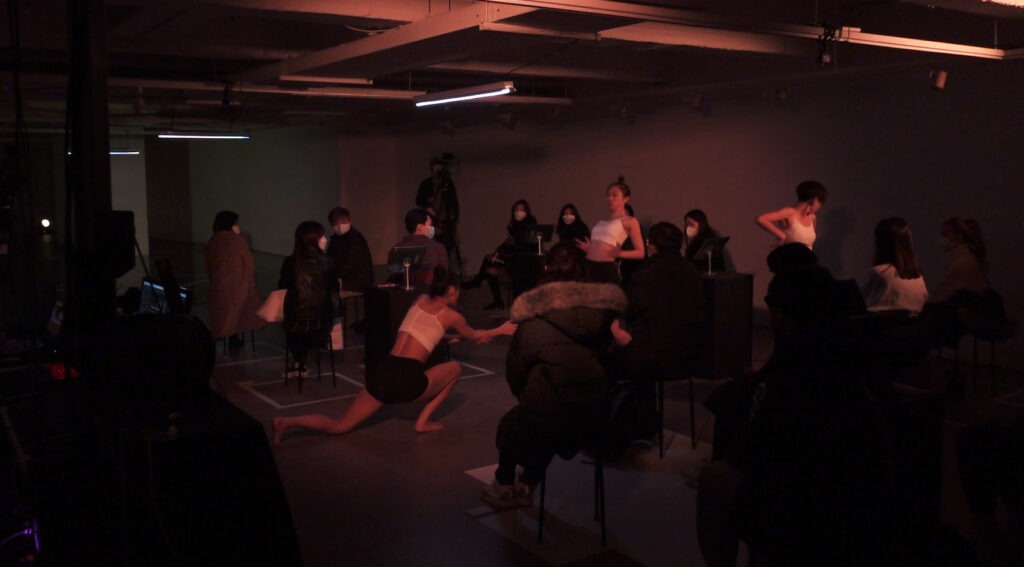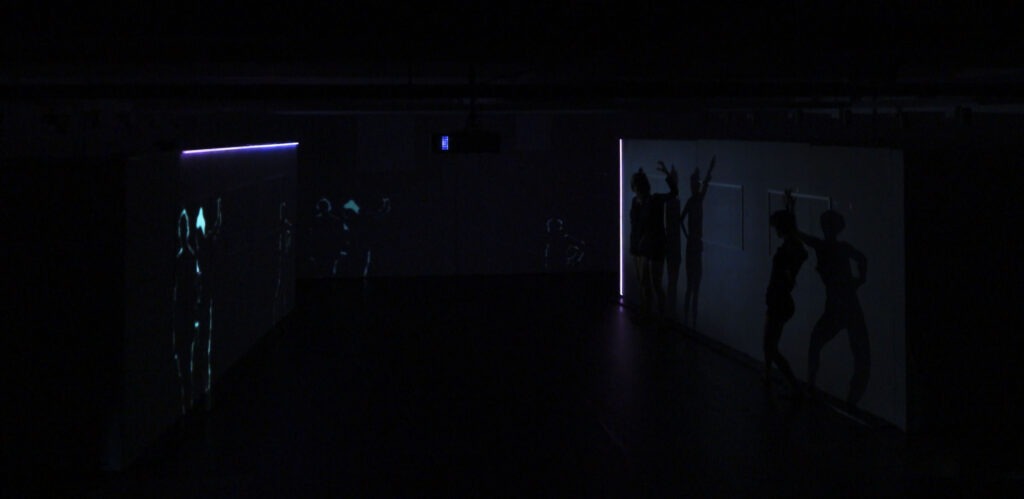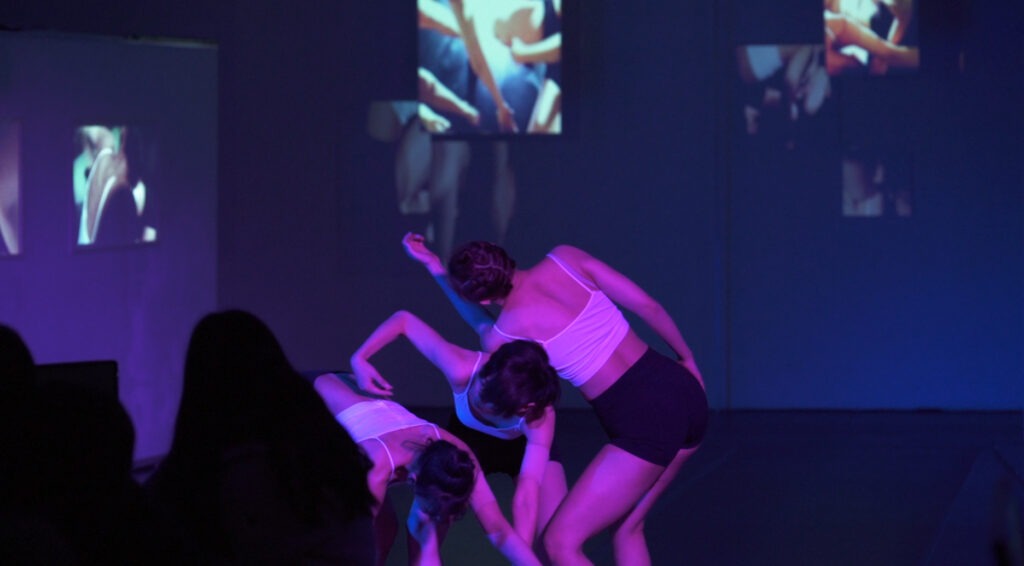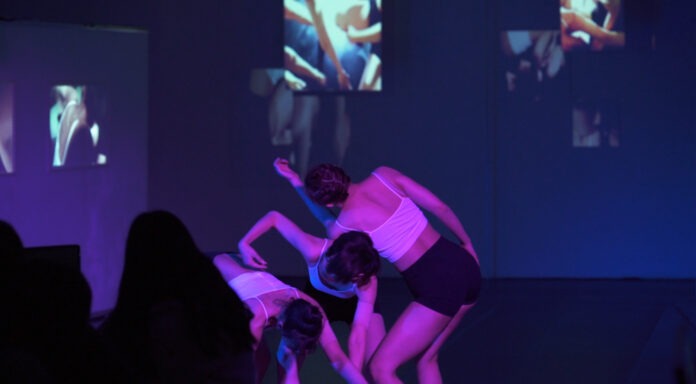In the world of dancing, there had been only one medium to deliver their concept – the physical body.
For centuries, any genre of dance performances had heavily relied on body movements. Many aspiring dancers had been also taught to use the body as the only instrument, moving in space and time with strength.
However, since the digital revolution began in the second half of the 20th century, the body was no longer the only instrument for dancers. As many parts of our lives became digitalised since then, the world of dance also entered the era of digitalisation and created a whole new genre – “dance technology”.
The definition of dance technology is often misunderstood as “any form of dance that adopts technological tools”. Just because a performance uses computers, flashy lights, or other high-tech elements, it cannot be classified under dance technology, as it would mean most of the existing performances are part of that genre.

Dance technology is a genre where technology is no longer a secondary measure but the main media that stands out through the act. Using many tools such as motion capture and artificial intelligence, artists can either enhance their act or even generate a whole new form of a stage.
LOOK: The Eyes of a Dimension
In the case of “LOOK: The Eyes of a Dimension”, a live dance technology performance held in early January in Insa-dong, Seoul, South Korea, it was all about bringing the technology to converge the digital world with the physical world.
The production team of eight members, led by Park Sun-you, a Seoul-based sound and video artist, tried to shed new light on our physical body. The team tried to feature how our bodies feel uncontrollable in some situations, when we are ill, for example, with the help of technology.
There are three different parts performed in the order in LOOK. The first is “observation”, where the dancers and audience observe and recognise dancers’ physical body. The next is “imagination”, a virtual world that exists in one’s mind. The last is “resignation”, admitting the gap between the reality and the virtual world.
During the 50-minute-long performance, three female dancers performed a variety of body movements to show the unfamiliarity of the physical world.
What made this experimental performance was the use of high-tech elements. The production team aligned several portable tablet computers to play the recordings of dancers in the middle of the performance. The team also tracked the movements of the dancers in real-time, using motion tracking technology, and projected the recording across them.
To learn what dance technology means in the current era and hear more about their performance, 4i-mag met two staff members of the LOOK: Director Park and Park Su-young, a choreographer who performed on the stage.
Q. Please tell us more about the LOOK. What was the performance about?
Park Sun-you: “There’s a catchphrase we always use to describe our work: ‘I thought I had nothing but my own body. Thinking again, maybe I don’t even own my body.’ This is the fundamental idea that supports the entire performance. We think that our bodies are fully under our control. However, sometimes, we experience those moments when our bodies look different, or even unfamiliar.
The LOOK is a title for a series of different yearly performances to convey such an idea. It started with the use of audio and visual aids in the very first performance in 2019.”
Q. How did you come up with an idea to merge technology with modern dance?
Park Sun-you: “I have been wanting to make a performance about our bodies since when I was a university student. As it was about our bodies, I decided to adopt dance in the performance. I wanted my performance to be like an orchestra, where many instruments come together and play in harmony. That is how I brought technological tools, modern dance, and other audio aids together.”
Q. How were technological tools used in the performance?
Park Sun-you: “It wasn’t that we made this performance just to make use of technology. The technology was a medium for us to carry on the concept and the story of the LOOK.
We used many technological tools, especially during the imagination part. We wanted to do something more than just showing it through body movements; we wanted the audience to witness our virtual world.
One of the tools we used to fulfil this purpose was live camera projection mapping. There is a scene where dancers have little recording devices attached to their arms and observe each other. The recorded video from this live camera is projected in real-time at the back of the stage. This was where various points of view, from the audience and three dancers, overlap.
Another is the motion tracking, using Kinect [via an RGB-D camera]. This was used when the dancers entered the virtual world, shortly after the observation part. It was to separate the real dancers’ motions from the digital reflection and let dancers see their digital figures.

Lastly, we tried to recreate the virtual reality with iPads. Videos timely played on iPads [when the stage went black] featured the virtual world, which exists in our imagination. The videos were played while the real dancers sit in the dark. This was where the audience could see the virtual world with their own eyes. It was also when dancers could co-exist with their virtual figures.”
Park Su-young: “In the last scene, there are nine dancers in total on the stage: three dancers are real people and the rest exist in either the virtual world or reflection.
This scene received quite positive feedback from our audience, saying that they could be fully immersed with the plot thanks to the smooth convergence of technology.”
Q. Was it not difficult for the dancers to prepare for the dance technology performance?
Park Su-young: “Dancers had to do at least a year-long research of motions to design a very detailed choreography that would blend perfectly with the applied technology. That was not all – every dancer and member also came from a different career, study background, which made us take more time in research than what we expected. But it was an interesting process to mix our various talents and technology.”
Q. Are there any efforts to merge dance and technology in a live performance in South Korea?
Park Sun-you: “I am aware that there is an increasing number of live performances of dance technology in the country. But having performed since 2019, I think the LOOK series has pioneered the genre in South Korea.”
Park Su-young: “There are some artists that show interest in dance technology at the moment. However, artists should be careful not to rely on technology when they can use body motions for better delivery. I do not think a dance performance using a technological tool in a simple, one-dimensional manner, just to ‘show-off’, is good. There has to be a good reason why the performance needs to use such high-tech tools. I think artists should avoid their unnecessary uses just to make the performance look more ‘advanced’ with technology.”

Q. What does “technology” mean to you both?
Park Su-young: “Traditionally, art has been focused on completeness and aesthetics. It has been built on strong, serious topics and feelings that sometimes the audience may never experience in their lives.
I think the technology, on the other hand, improves the accessibility to many forms of art. Artists can inspire every individual in a more innovative, direct, friendly way with technology.”
Park Sun-you: “To me, technology is like a whole new musical instrument that I found in a foreign country. If you discovered a new instrument, you would think about using it to play your favourite song. Perhaps you might want to find a song that would suit the tone of that instrument.
As of today, it already feels a bit outdated to define the realm of art separately from technology. Technology is a flexible tool that could be used in any genre of art, from music to dance. Now is the era where us artists use this tool, somewhat inevitably, to make a better performance.”



